When Drew Beattie wants to get some fresh pictures of Vancouver's underwater nudis to throw up on his Instagram he first checks the weather — overcast skies and calm waters are key for crisp shots.
Next he gets his gear together. Camera, waterproof box, strobe lights, hot-pink gloves, a thick fleecy onesie — check. White mask, hot-pink fins, his trusty old neoprene hood, dry suit, 34 pounds of lead — check.
Then he hits the water, and sinks. Even on so-called “good-visibility” days, shooting macro pictures is ideal, because the waters in the Salish Sea are chock-full of plankton, algae, silt from the Fraser River and Lower Mainland rainwater runoff. The further away you take a picture from a subject, the cloudier the picture can be.
At 10 metres below the water's surface, where the sun's rays have been filtered out and the underwater world is cast in pale greens and blues, he spots a nudi.
It's sauntering along the edge of a piece of red algae, its appendages drifting freely around in the chilly 8 C water.
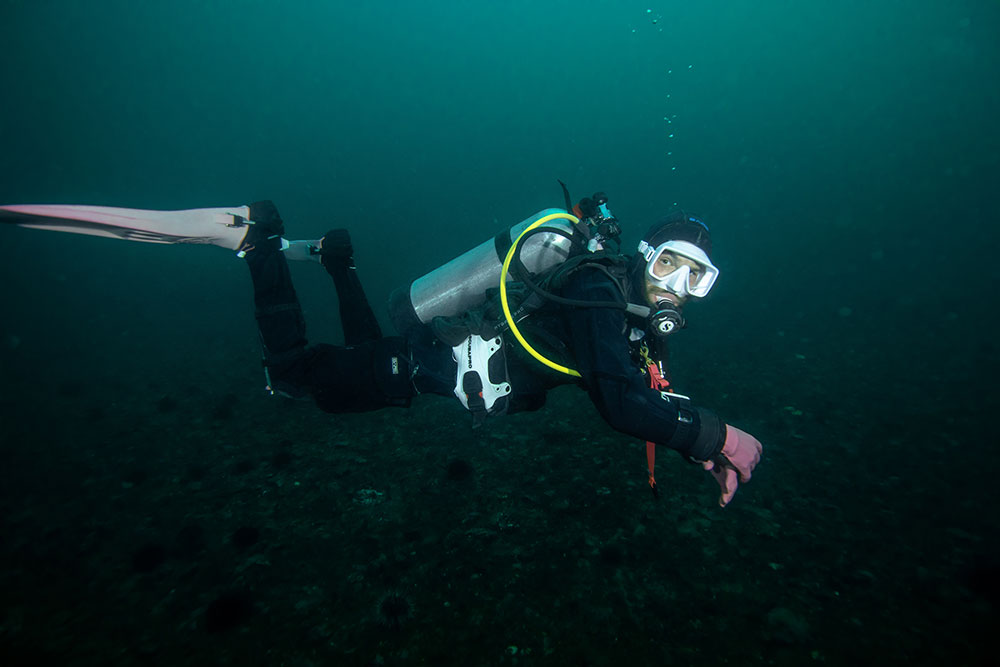
Beattie calms his breathing, checks his surroundings to make sure his knees and elbows won't bump anything, slowly gets the camera in position and — click — gets the shot.
Beattie is a scuba instructor and enthusiastic amateur underwater photographer. He's been diving since 2013 but picked up photography in 2020, near the beginning of the pandemic.
One of his favourite subjects are Vancouver nudibranchs, or nudis — brightly coloured sea slugs that thrive in the Salish Sea's chilly waters.
There are over 80 species of nudibranchs that live in British Columbia's waters. Some, like the striped nudibranch, look similar, albeit brighter, than their distant terrestrial cousins; others, like the red dendronotus look like a supernova and a candy cane had a baby.
That's part of what makes them so fun to photograph, Beattie says. They're colourful, plentiful and make for beautiful subjects.
Beattie has spent a lot of time in Vancouver waters. A single dive takes about 45 minutes. By diving two to five days per week, he’s spent the equivalent of 50 to 75 days under the sea over the past eight years.
And it seems The Little Mermaid was right: things are better down where it's wetter.
The Salish Sea is a world-class diving location, but many people, even locals, don't know what's in their own backyard, Beattie says. People who get to explore the world that sits just 12 metres off Vancouver's shores are often shocked by what they get to see, he says.
Diving in the Salish Sea — in particular off northern Vancouver Island — is some of the best diving in the entire world, according to Beattie. The incredible abundance and range of wildlife — from tiny glow-in-the-dark shrimp, to 1,500 pound sea lions — makes these chilly waters even better than diving off Komodo, an island in Indonesia renowned for its tropical dives.
On a typical dive off Porteau Cove or Whytecliff Park you can spot the squishy, spiky tube-like sea cucumbers, sea stars, giant Pacific octopus, white nudibranchs, lemon peel nudibranchs, clown nudibranchs, great sculpins, forests of plumose anemone, spiky red and purple sea urchins, dozens of lazily drifting fish, seals that “look like underwater yams,” clouds of moon jellies, fried egg jellyfish, comb jellyfish and lion's mane jellyfish with tentacles up to 30 metres long.
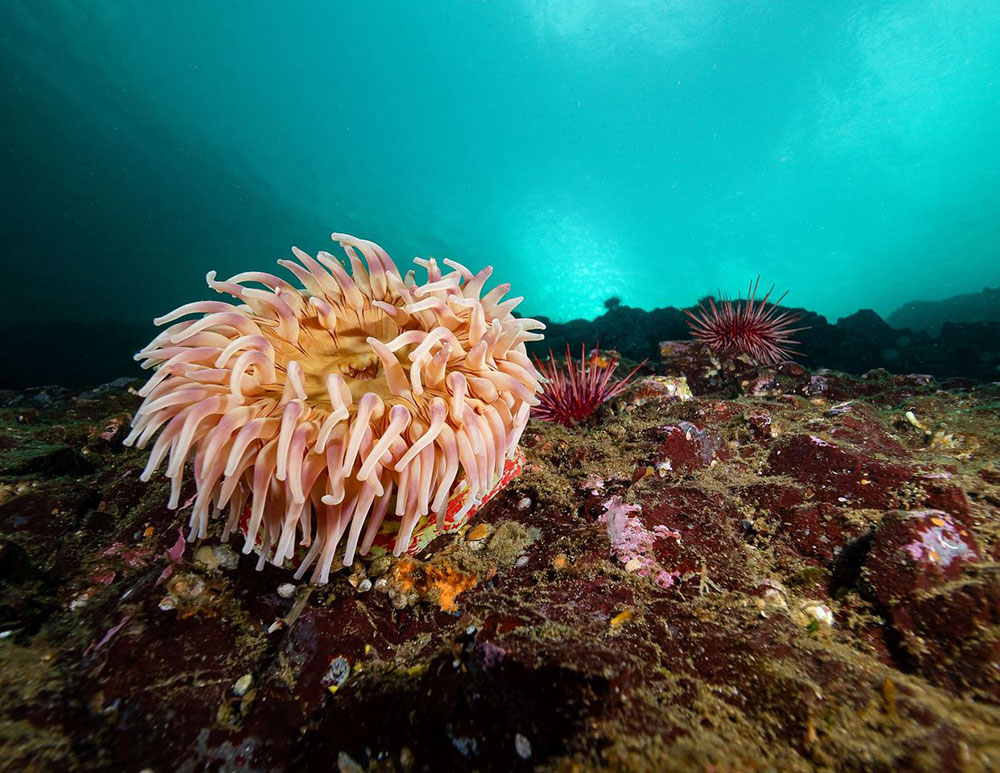
When you're underwater you feel like you're flying — but all of these animals view you as slow-moving and clumsy, so they don't view you as a predator, Beattie says — making it possible to easily observe them in their natural habitat, going about their everyday lives.
Then there's the special things you have to go a bit further afield to find: salt and pepper nudibranchs, opalescent nudibranchs and sea lions to name a few.
While there are laws that protect sea lions from being harassed by divers, sometimes the 1,500-pound animals will approach you because they're curious, Beattie says. A sea lion has the same skull size and shape as a grizzly bear, but acts more like a puppy, he adds. They're gentle, intelligent and fast creatures who explore their surroundings using their jaws — so it's not uncommon for a sea lion to place a diver's head in its mouth. Beattie says this has happened to him. At the time, he didn't notice because the animal was so gentle. Also, he was wearing a seven-millimetre-thick neoprene hood.
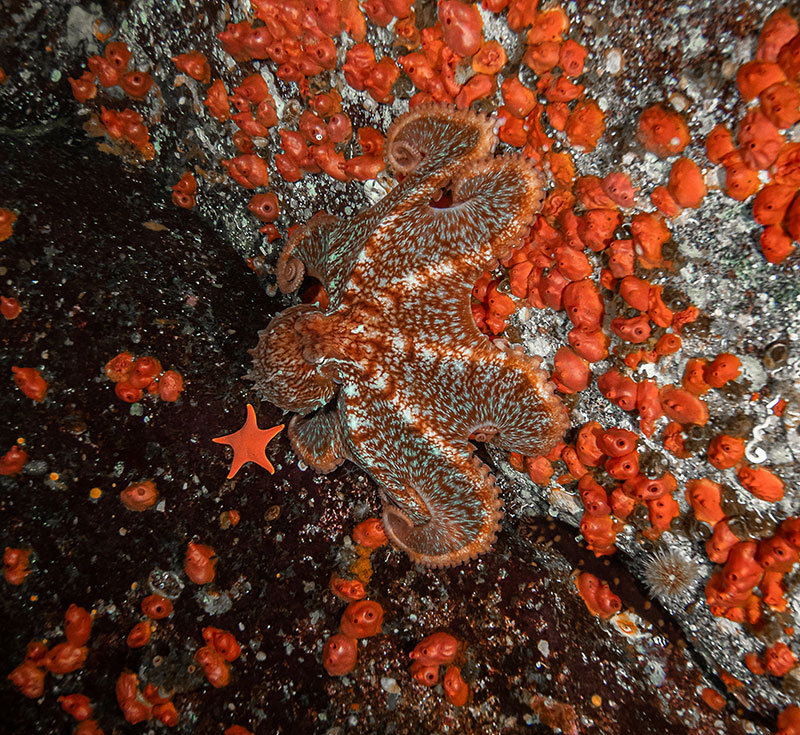
Then there are glass sponge reefs, which were thought to have gone extinct 40 million years ago, until one was discovered in the late ’80s a stone's throw from Vancouver and 40 metres below the surface of the Salish Sea. These glass sponge reefs are thought to be about 9,000 years old.
These reefs, also known as bioherms, can grow to be six metres wide, six metres long and three metres tall, he says.
B.C.'s waters are booming with life because the deep water stays the same temperature year-round at 8 to 10 C and there are just enough nutrients to support a lot of life without promoting algae blooms like in the San Francisco Bay, says Christopher Harley, professor in the University of British Columbia department of zoology and Institute for the Oceans and Fisheries.
Regional biodiversity isn't as high as a pristine coral reef but it’s “quite high” for a cold-water ecosystem, he says. Many plants and animals, like certain types of sea stars, kelp and glass sponge reefs, are also unique to the area and have helped shape the iconic Salish Sea.
This is part of why we have so many species of nudibranchs, Harley says — biodiversity begets biodiversity. This has allowed nudibranchs to evolve into their wide range of shapes, sizes and appetites.
Some nudibranchs are as long as a toonie is wide; others are a foot long, Beattie says.
They also come in just about every shape, colour and size.
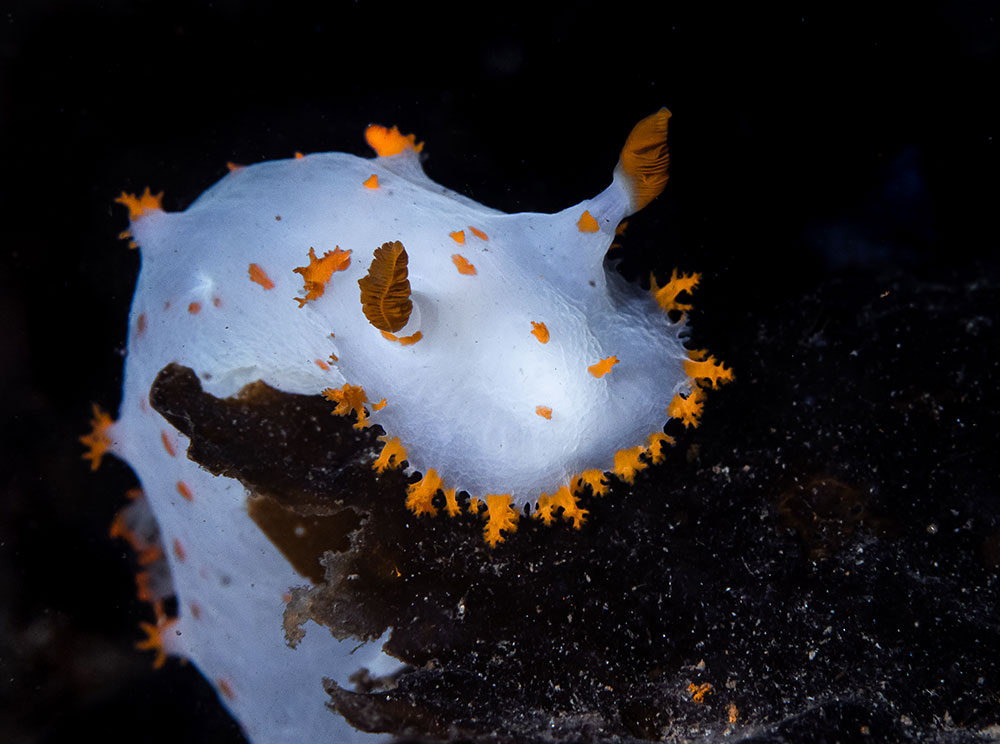
Nudibranchs are found all over the world, says Danny Kent, Vancouver Aquarium curator of Canadian Waters and Propagation. He's seen them in the Arctic, the tropics and the southern hemisphere.
But you can see hundreds of white, lemon peel and clown nudibranchs in the local waters, Beattie says, while a friend who dove in the Cayman Islands for three years saw six nudibranchs total.
Harley and Kent said they were not sure how nudibranch numbers compare regionally to populations around the world.
The pair also said they didn't think many animals preyed on nudibranchs. Their bright colours could be seen as a warning to other animals that they're poisonous when eaten. But not all nudibranchs are poisonous, Harley says.
Scientists don't fully understand why nudibranchs are some of the ocean’s most colourful animals, Harley adds. After all, the ocean’s water filters out light, and many nudibranchs live at a depth where everything looks green or blue unless you bring a full-spectrum flashlight with you.
Nudibranchs eat a wide variety of things, from sea anemones to bryozoans to other nudibranchs.
They also take on elements of their prey. For example, bright yellow nudibranchs prey on bright yellow sponge, and orange nudibranchs munch on orange sponge, Kent says. Some nudibranchs will also eat stinging anemones and transfer the stinging cells to their backs.
Nudibranchs are “important predators and their prey know it,” Harley says. Which is why nudibranch prey have evolved a wide variety of defence mechanisms, from bryozoans producing spikes when it smells a nudibranch approaching, to a sea anemone that swims away when a nudibranch takes a bite out of it.
Watching them hunt is like a slow-motion horror movie, Beattie says.
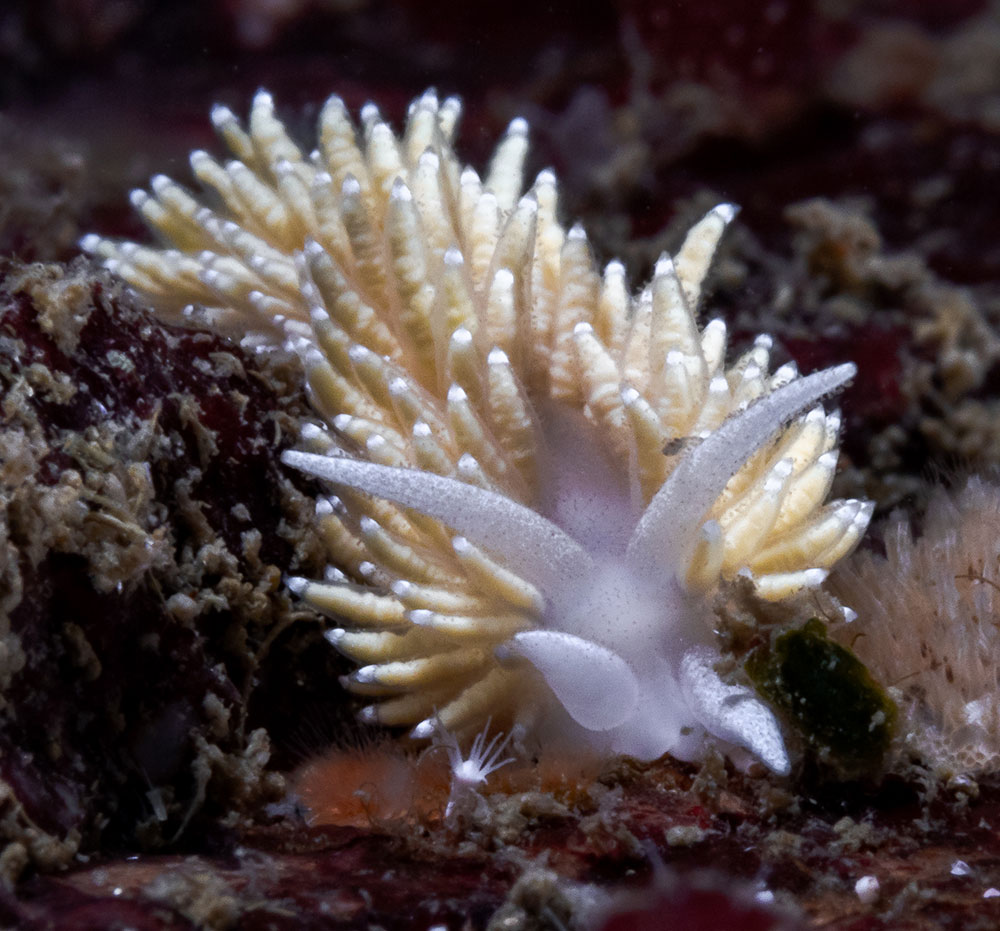
Life in the ocean moves a bit slower than on land, but you can still watch the ebb and flow of the seasons that boom and bust populations. For example, Giant Pacific octopus, one of Beattie’s favourite creatures, are hard to spot during December when lingcod “decimate” their populations, but baby octopus are “everywhere” in April and May, Beattie says.
Beattie says he has not yet seen an orca swim by while diving, and would love to see a great white shark or hammerhead shark — but you have to leave B.C. to see those predators.
But all in good time. These days he's focused on improving his underwater photography skills. Adding photography equipment on top of his cold-water diving gear is “ridiculously cumbersome,” but lets him see places he’s visited thousands of times before in a brand new light, he says.
As our interview wraps up, Beattie finishes his hot chocolate and says he's heading to spend his day off under the waves at Porteau Cove. Maybe to take some pictures and maybe just to hang out on the sea floor, he says with a shrug.
Every day is different, he adds — you never know what you'll find under the sea. ![]()
Read more: Photo Essays, Environment



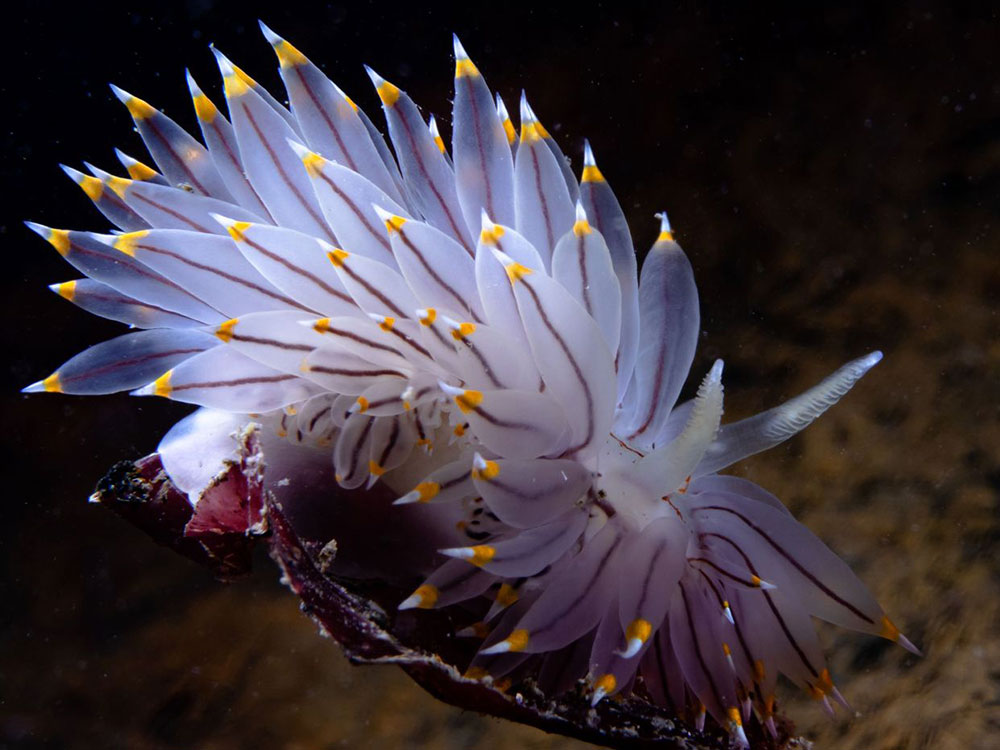












Tyee Commenting Guidelines
Comments that violate guidelines risk being deleted, and violations may result in a temporary or permanent user ban. Maintain the spirit of good conversation to stay in the discussion.
*Please note The Tyee is not a forum for spreading misinformation about COVID-19, denying its existence or minimizing its risk to public health.
Do:
Do not: